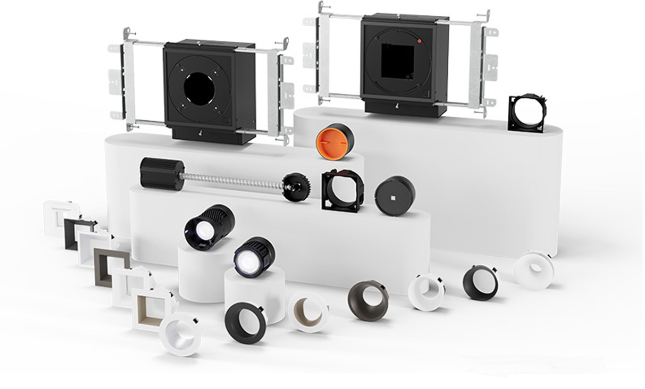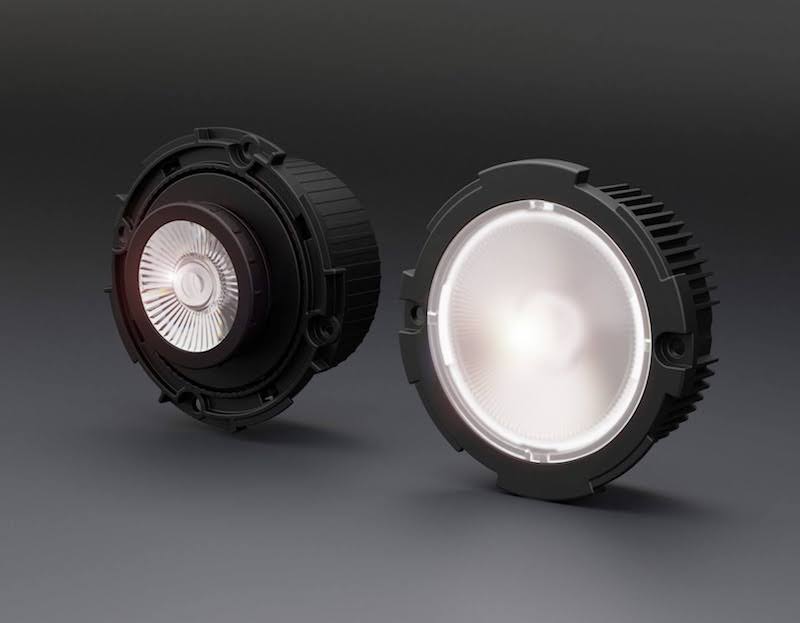While lighting innovation is moving at a dizzying pace, the age of LEDs has sent us reeling backward a bit in our ability to experience light quality inside that mimics the outdoors. Ever since the demise of incandescent bulbs, manufacturers have been chasing the elusive color rendering index (CRI) score of 100. While most builder-grade LEDs register around 80, DMF’s new integrator-facing Artafex modules boast a 93+ CRI. That certainly caught my attention.
Light quality is connected to health in a big way. The higher the CRI, the closer we are to mimicking the natural world and improving mood, overall wellbeing, reducing eye strain, getting better sleep, and increasing productivity. Thanks to DMF’s Lani Godfrey, I soon had a big box of Artafex goodies sitting on my doorstep. I’d already decided to upgrade my office lighting experience, but how would the new lights would live up to all the hype?
Unboxing
I unpacked everything and laid it out on the floor. There were downlight modules resembling hockey pucks, trim rings, lenses, adjustable downlights, and Edison bulb adapters. I’d upgraded my lighting before, so I wasn’t intimidated (maybe a bit) by all the shiny objects.

I began assembling the puck modules with trim rings and adapters. One of Artafex’s big selling points in its market literature brags about “interchangeable trims, color temperatures and beam angles.” I really liked this “Lego” style approach where DMF is ensuring forward and backward compatibility with its product line and giving integrators infinite installation options. By stocking a few key SKUs on a van, a custom installer could easily be ready for 90% of their installation scenarios.
Installation
I pulled down my old lights and connected the universal orange adapter to an Edison socket adapter already installed (made by another manufacturer but the DMF plug fit with no issues). I tensed the spring clips and slid each new module into place. I was gratified by how smoothly these trim rings installed and the wide flanges covered up any sheetrock rough cuts.
Related: How DMF Saved Me from the Indignity of Inferior LED Lighting
I turned the power back on and stood back to admire my handiwork. The lights immediately shone bright and I rocked back the dimmer a bit to see how well the dimmer portion worked. I was able to dim them all down to below 1% with no flicker at all. DMF touts compatibility with every major lighting control solution on the market (I have Lutron). As the room ramped down, the lights delivered a “golden hour” dusk experience that’s hard to do justice with words.
Artafex’s 93+ CRI differs from the prior DID2 generation modules with its True Spectrum technology. According to the DMF website, it’s “an advanced color rendering technology designed to enhance the accuracy and richness of colors under artificial lighting. Traditional Color Rendering Index (CRI) measures how well a light source reproduces colors compared to natural light, using eight standard color samples. However, True Spectrum goes beyond this by utilizing the TM-30 system, which evaluates 99 color samples, providing a more comprehensive assessment of color fidelity and saturation.”
Those numbers are nothing to sneeze at, and kudos to DMF for achieving such dramatic results in a few short years. We’ll no doubt be seeing the next generation of lighting operating at 98 or 99 CRI in the next couple of years. With its modular approach, future upgrades should be no issue at all, and all DMF modules are warrantied for 10 years.
Final Report
DMF lives in a unique place in the market wedged between budget players like Halo and CREE and higher end fixtures from Ketra and Lutron. In other words, they’re primed for middle market domination. Artafex downlighting varies in pricing based on module and finish but assume a budget range of $200 per fixture. This is a bargain compared to some of the higher end fixtures but much more expensive than the builder-grade lighting. The old adage of “you get what you pay for” is alive and well here.
DMF products are top notch in terms of quality and worth the extra spend. I hope the integrator community decides to tune in and go after this growing market segment.









